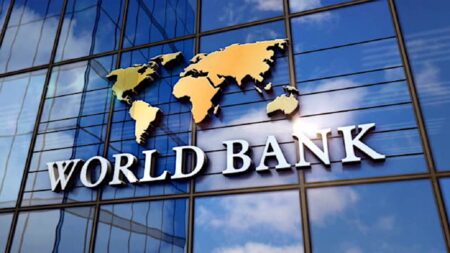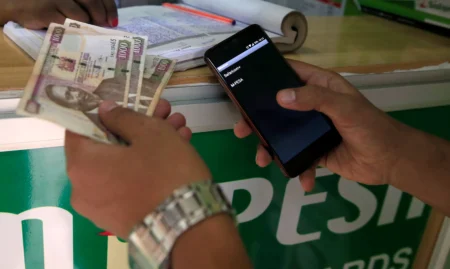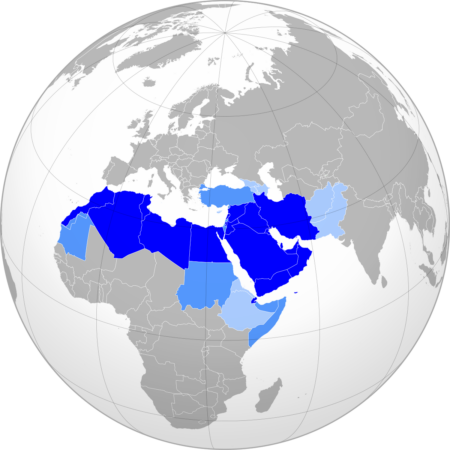- How transition finance can catalyse Africa’s green industrial revolution
- Stanbic PMI Report: Mixed performance as Kenya’s agriculture, construction offset manufacturing decline
- Uganda’s land management gets a tech makeover to boost transparency
- Nigeria’s output dips fastest in 19 months on a sharp rise in costs
- Apple faces growing backlash over Congo exploitation
- Why East Africa is staring at higher wheat prices in 2025
- Nairobi Gate SEZ pumps $7 million into Kenya’s agro-processing industry
- What impact will the US election have on Africa?
Browsing: The World Bank
- The trio’s collaboration focuses on a joint response that will help countries better prepare and respond to public health threats.
- Trio says their alliance will leverage each other’s expertise to help countries strengthen pandemic preparedness and enhance resilience during pandemics.
- According to the WHO, the COVID-19 pandemic highlighted the need for new sources of financing to bolster health systems.
The leaders of the International Monetary Fund (IMF), the World Bank Group (WBG), and the World Health Organization (WHO) have agreed on a broad-based cooperation to boost the world’s pandemic preparedness.
In a statement to the press, the three global institutions said this cooperation will allow a scaling up of support to countries to prevent, detect, and respond to the next global health crisis.
“The stepped-up collaboration with the World Bank Group and the World Health Organization will help our institutions complement and leverage each other’s expertise to help our members …
- Kenya’s bilateral loans data show that the Asian giant is still a major lender to Kenya mainly for the development of roads rails and port infrastructure.
- The country’s debt as of March 2024 comprised of $80.9 billion (Sh10.4trillion) comprising $40.5 billion (Sh5.2 trillion) domestic and same amount in external loans.
- In the past three months the strong shilling has come in handy in helping the state reduce its debt.
Kenya owes China $7.2 billion (Sh920.52 billion) in loans making it the leading lender by country rankings, even as President William Ruto looks west for more financing and trade cooperation.
Official data shows the Asian giant is still a major lender to Kenya mainly for the development of roads rails and port infrastructure.
It is the second biggest majorl lender after the World Bank, whose credit line to Kenya is currently at an estimated $14 billion (Sh1.8 trillion)
The country’s debt …
- Uganda’s diaspora remittances have seen 13.4% jump, reaching $1.42 billion.
- Remittances continue to outshine foreign direct investment and official development assistance as the primary source of external finance for low and middle-income countries.
- Economies are leveraging diaspora remittances through innovative financial instruments such as diaspora bonds and policies aimed at financial inclusion to enhance their impact on development.
Diaspora remittances from Ugandans living and working abroad increased by 13.4 per cent in the 12 months ending January 2024. This surge, as reported by the Bank of Uganda’s Executive Director of Research, Mr. Adam Mugume, highlights the increasing role of diaspora inflows in the nation’s economy, reaching $1.42 billion, up from the previous $1.25 billion.
Such growth underscores the essential contribution of the Uganda’s diaspora remittances amidst a challenging global financial landscape.
Globally, remittances have emerged as a critical source of external finance for low- and middle-income countries (LMICs), overshadowing foreign …
Since Covid-19 struck, developing nations have been battered by global external forces further dampening their growth prospects.
- Under the World Bank’s income classifications, the world currently comprises 28 low-income, 108 middle-income, and 81 high-income economies.
- Worse, the World Bank says, in more than a third of the poorest countries, incomes per head will be below 2019 levels in 2024.
Economic indicators for Kenya and other developing nations have continued to depict a grim picture over the past four years, according to a new World Bank report.
The global lender states that economic growth prospects for developing nations, including Kenya, for the first four years of the 2020s have proven to be the weakest in almost 30 years.
According to the World Bank’s January economic forecast report, the average growth rate for developing nations during the period under review is 3.4 per cent, lower than it has been since the 1990s.…
- The World Bank recommends three broad policy pathways to achieve inclusive growth and fight poverty.
- These include connecting the poor to economic growth and strengthening households’ resilience to adverse weather shocks.
- The lender also advocates leveraging fiscal policy programs to support poverty reduction objectives.
Kenya’s economic growth holds the promise of lifting millions out of poverty, even amid challenging economic conditions. According to the World Bank, the secret lies in adopting an inclusive growth strategy that not only enhances economic opportunities and productivity for the poorest but also remains steadfast in pursuing long-term developmental objectives.
This vision is captured in the latest World Bank report titled “Kenya Poverty and Equity Assessment (KPEA) 2023 – From Poverty to Prosperity: Making Growth More Inclusive,” which focuses on the years from 2005 to 2021.
The report underscores that while Kenya has made strides in reducing poverty and improving living standards, the …
- COVID-19, the Ukraine-Russia war, commodity price woes, and high inflation leave the Middle East and North Africa (MENA) region on an unacceptably slow growth trajectory.
- Countries’ economic fallout is also worsened by rising debt, currency depreciation, and negative impacts of natural disasters.
- As a result of these shocks, the human toll on the livelihoods of the people across MENA is very devastating.
Millions of people across economies in the Middle East and North Africa (MENA) are grappling with a number of challenges attributable to the adverse impact of global economic upheavals.
The global shock fueling economic fallout includes the COVID-19 pandemic, the Ukraine-Russia war, commodity price swings, and high inflation. Rising debt burdens, currency depreciations in middle-income economies, and the consequences of natural disasters linked to climate change are also to blames.
As a result of the sequence of these global shocks, the human toll on the livelihoods of …









